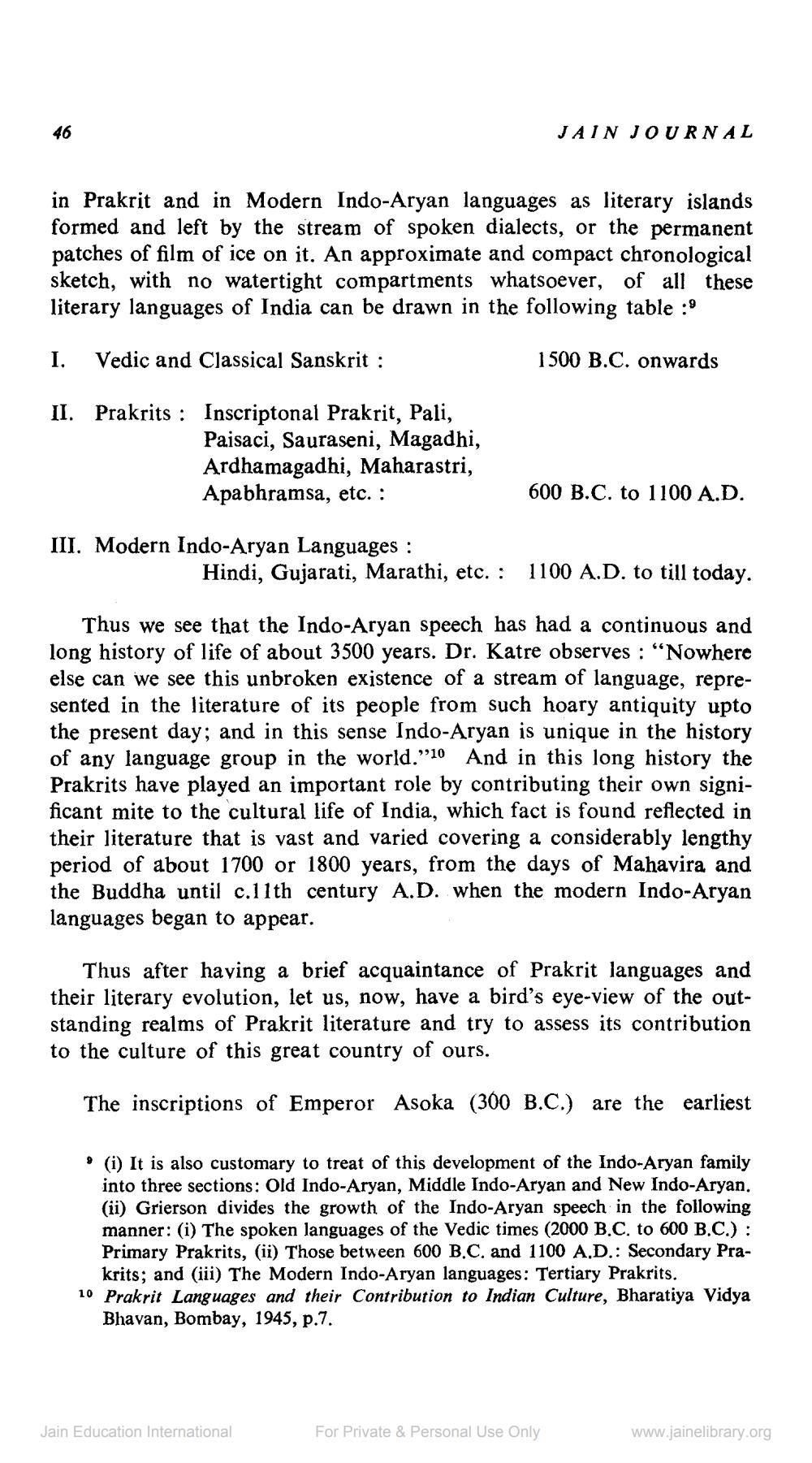Book Title: Jain Journal 1979 10 Author(s): Jain Bhawan Publication Publisher: Jain Bhawan Publication View full book textPage 9
________________ JAIN JOURNAL in Prakrit and in Modern Indo-Aryan languages as literary islands formed and left by the stream of spoken dialects, or the permanent patches of film of ice on it. An approximate and compact chronological sketch, with no watertight compartments whatsoever, of all these literary languages of India can be drawn in the following table :: 1. Vedic and Classical Sanskrit : 1500 B.C. onwards II. Prakrits : Inscriptonal Prakrit, Pali, Paisaci, Sauraseni, Magadhi, Ardhamagadhi, Maharastri, Apabhramsa, etc. : 600 B.C. to 1100 A.D. III. Modern Indo-Aryan Languages : Hindi, Gujarati, Marathi, etc. : 1100 A.D. to till today. Thus we see that the Indo-Aryan speech has had a continuous and long history of life of about 3500 years. Dr. Katre observes : “Nowhere else can we see this unbroken existence of a stream of language, represented in the literature of its people from such hoary antiquity upto the present day; and in this sense Indo-Aryan is unique in the history of any language group in the world.”10 And in this long history the Prakrits have played an important role by contributing their own significant mite to the cultural life of India, which fact is found reflected in their literature that is vast and varied covering a considerably lengthy period of about 1700 or 1800 years, from the days of Mahavira and the Buddha until c.11th century A.D. when the modern Indo-Aryan languages began to appear. Thus after having a brief acquaintance of Prakrit languages and their literary evolution, let us, now, have a bird's eye-view of the outstanding realms of Prakrit literature and try to assess its contribution to the culture of this great country of ours. The inscriptions of Emperor Asoka (300 B.C.) are the earliest . (i) It is also customary to treat of this development of the Indo-Aryan family into three sections: Old Indo-Aryan, Middle Indo-Aryan and New Indo-Aryan. (ii) Grierson divides the growth of the Indo-Aryan speech in the following manner: (i) The spoken languages of the Vedic times (2000 B.C. to 600 B.C.) : Primary Prakrits, (ii) Those between 600 B.C. and 1100 A.D.: Secondary Pra krits; and (iii) The Modern Indo-Aryan languages: Tertiary Prakrits. 10 Prakrit Languages and their Contribution to Indian Culture, Bharatiya Vidya Bhavan, Bombay, 1945, p.7. Jain Education International For Private & Personal Use Only www.jainelibrary.orgPage Navigation
1 ... 7 8 9 10 11 12 13 14 15 16 17 18 19 20 21 22 23 24 25 26 27 28 29 30 31 32 33 34 35 36 37 38 39 40 41
